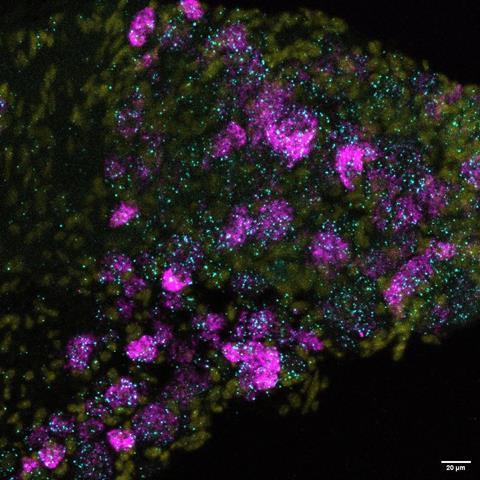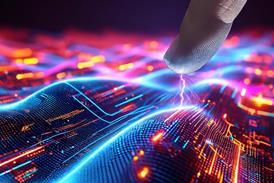Surprisingly little is known about the molecular basis of our sense of touch. A newly discovered ion channel, published in Science, fills in the picture.
Here we see mouse neurons with the well-known ion channel Piezo2 in magenta, which converts mechanical stimuli into electrical signals and thus enables the sense of touch. But it is the cyan dots that are important. These are newly discovered ion channels called Elkin1, which also play a crucial role in the sense of touch. Elkin1 is also responsible for converting mechanical signals into electrical signals. More than half of the mice in which the gene for Elkin1 was switched off no longer responded to a light stroke with a feather over their hind legs, whereas normal mice responded immediately. Researchers at the Max Delbrück Center in Berlin, Germany, have identified a completely different role for Elkin1: the protein is involved in “sensing” the pressure that moving melanoma cells exert on their surroundings. Further studies in cultured human nerve cells suggest that Elkin1 is also involved in the sense of touch in humans, possibly specifically in the conversion of painful mechanical signals. If this is indeed the case, Elkin1 could be a new target for the development of therapies for chronic pain.
Do you have any nice pictures of experiments (in the house, garden or kitchen)? Send them to redactie@kncv.nl and who knows, you might get a place on our website!

















Nog geen opmerkingen